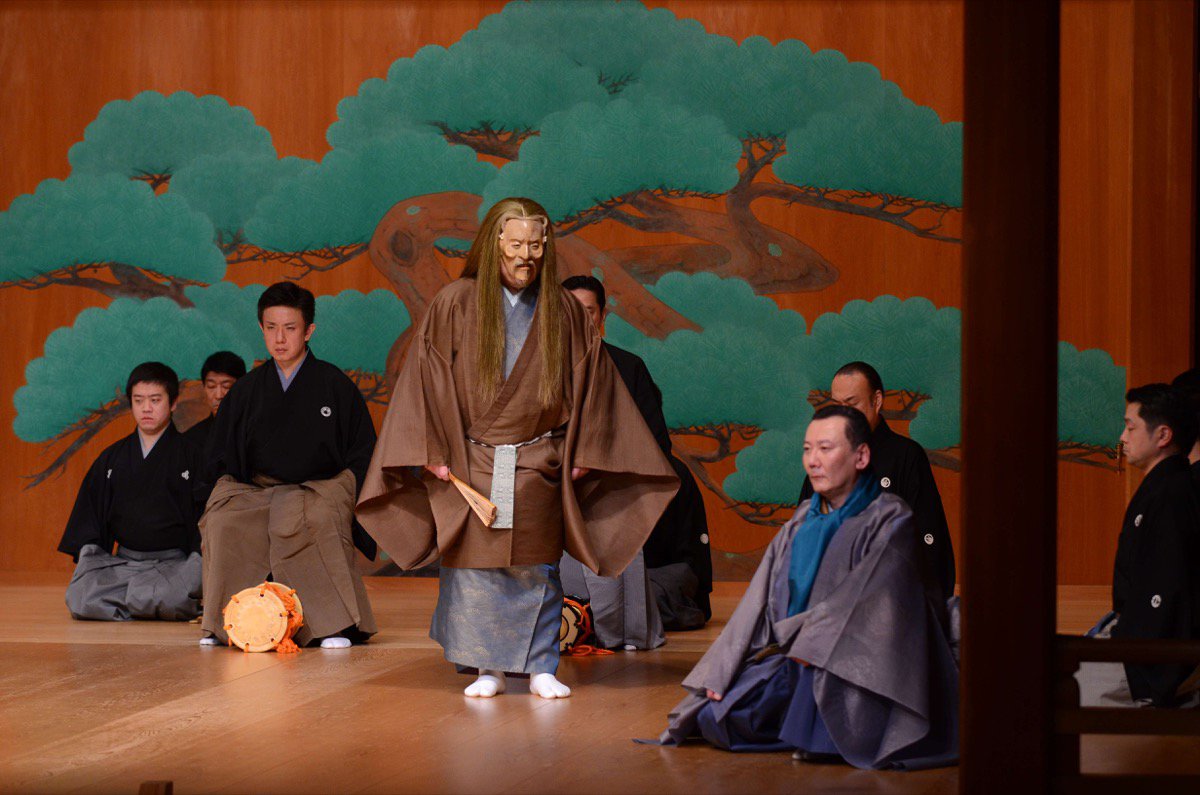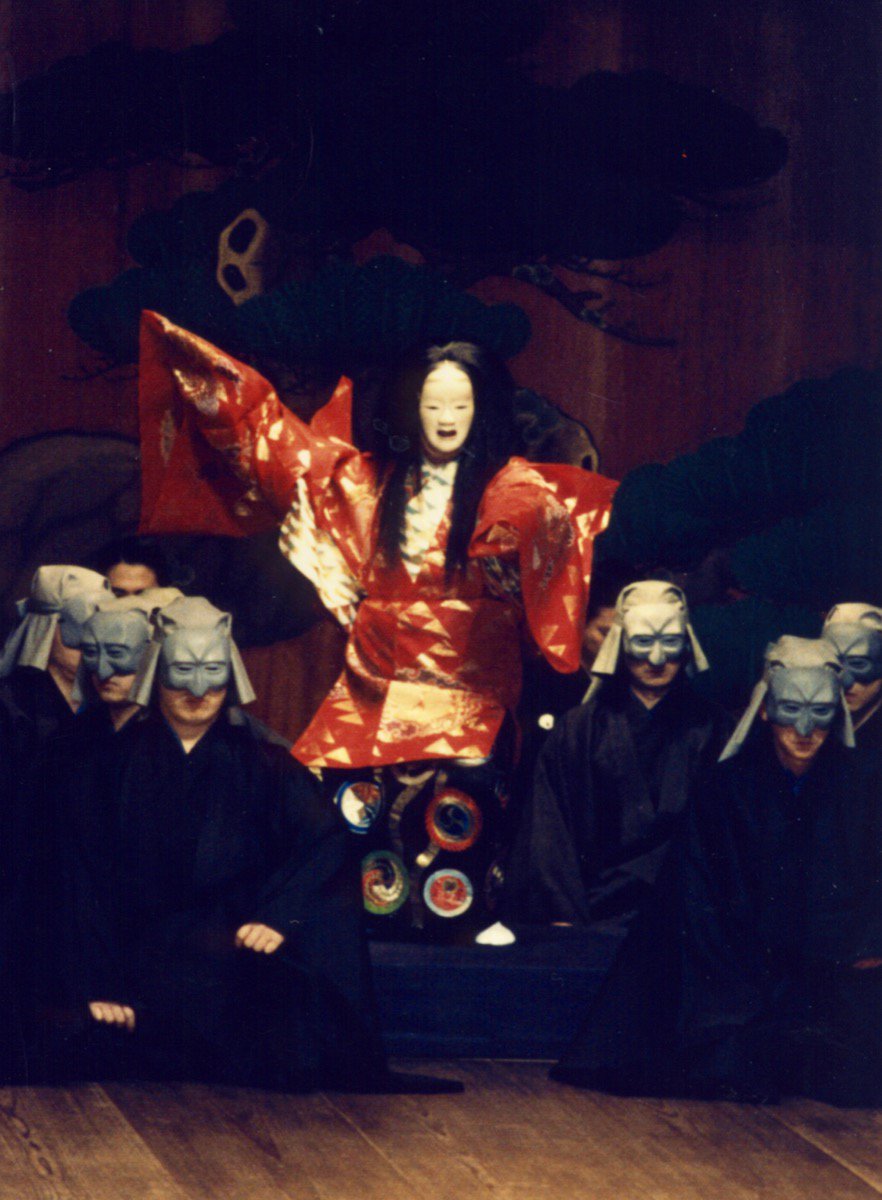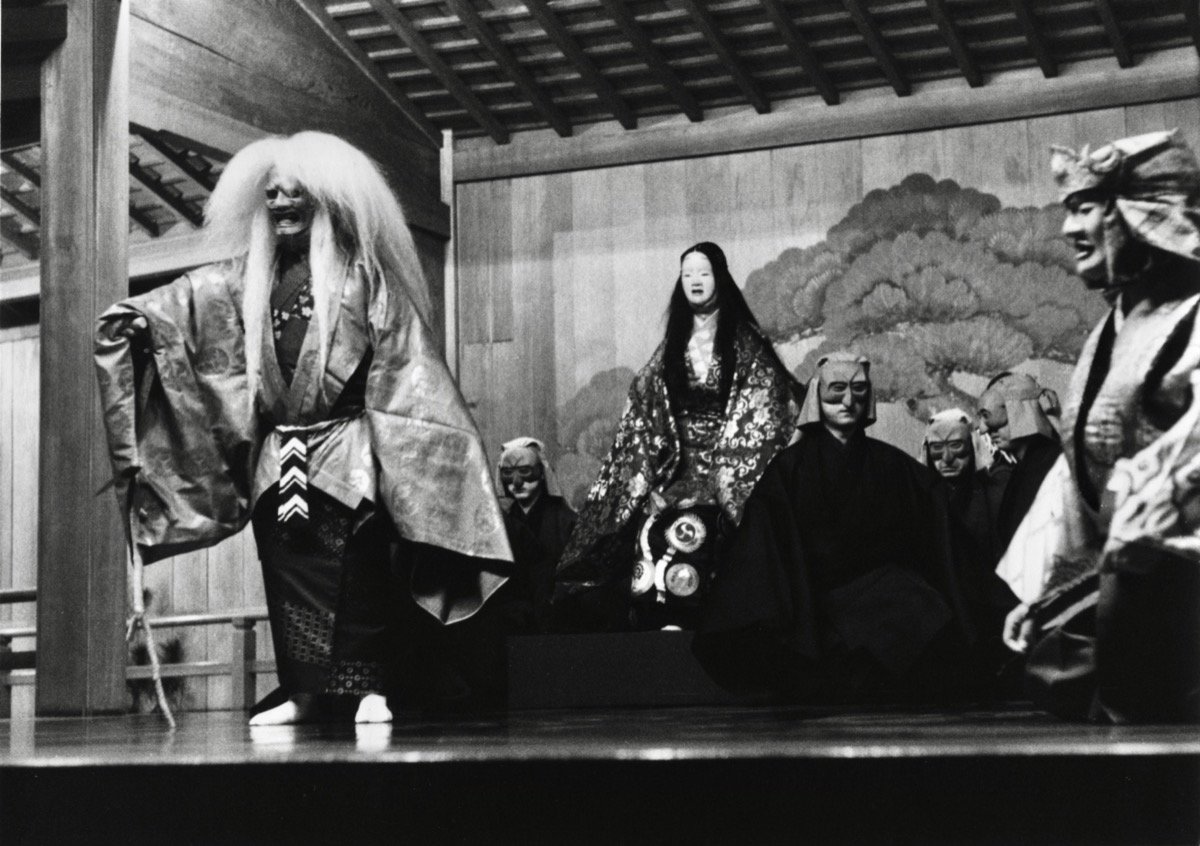The Piano Tuner – Chopin Noh Play
Created by Jadwiga M. Rodowicz-Czechowska
Translated by Tokimasa Sekiguchi
Directed by Kenichi Kasai
Choreographed and Performed by Tetsunojo Kanze IX
Integrating Chopin’s poetic music and Japanese traditional theater, The Piano Tuner opens up a new field of performing arts.

Beautiful and sensational.
The Piano Tuner perfectly embodies a seemingly impossible integration of two artistic manifestations: one exists in liberal and ephemeral performance, and the other in disciplines and formality fostered and handed down for hundreds of years.
— Andrzej Wajda (film director)
Performance history
- Teatr Studio (Warsaw, Poland, 2011)
- Holy Cross Church (Warsaw, Poland, 2011)
- National Noh Theater (Tokyo, Japan, 2011)
- Ishikawa Ongakudo (Ishikawa, Japan, 2011)

Takahime – The Hawk Princess
Created by Mario Yokomichi
Adapted from “At the Hawk’s Well” by William B. Yeats
Composed and choreographed by Hisao Kanze
Inspired by Noh, Yeats wrote At the Hawk’s Well.
Later, it was adapted into Takahime – The Hawk Princess.

Takahime – The Hawk Princess exemplifies how Noh, Japanese traditional theater, and Western theater have mutually influenced. Inspired by Noh, the Irish poet and playwright William B. Yeats created At the Hawk’s Well, a verse drama based on a Celtic myth. It premiered in London in 1916. Its abstract expression and the use of masks suggest an influence of Noh. A half century after the premiere, a Japanese Noh researcher and director Mario Yokomich adapted the Irish drama into a contemporary Noh Takahime – The Hawk Princess. Hisao Kanze, a leading Tessen-kai Noh actor, composed the music and choreographed, and members from the Tessen-kai performed in the premiere in Tokyo in 1967. While maintaining the essential structure of Noh in which narrative, music, and dance are tightly integrated, Takahime breaks some conventions. For instance, while a group of narrators and choir always sits on the side stage without masks and costumes in traditional Noh, in Takahime, the group sits on the mainstage with masks and costumes as the “rocks” on the uninhabited island. Takahime is considered as an epoch-making work that explores the possibilities of Noh as a performing art form.
Story: On a bleak, uninhabited island, the Hawk Princess guards a dried up well. It is said that the well is actually a magical fountain and its water gives eternal life to humans. A young man Cuchulain comes to the well in search of eternal youth and meets an old man who has been waiting for decades for the water to come out. The old man tells Cuchulain that he fell asleep whenever the water came out and that he wasted his life. He urges Cuchulain to leave, but the young man is determined to stay. The water springs when the princess screams. The old man falls asleep. While she flies around the well, Cuchulain attacks her in vain. She drinks up the water and leaves, and Cuchulain is left by the well without gaining the water.
Performance history
- Odin Teatret and Holstebro Public School (Holstebro, Denmark, 1972)
- Teatrino di Palazzo Grassi (Venice, Italy, 1972)
- Atelje 212 (Belgrade, Yugoslavia, 1972)
- Theatre d’Orsay (Paris, France, 1976)
- Royal Dramatic Theater (Stockholm, Sweden, 1976)
- And many other locations

Touring Details
- Running time: 85 minutes
- Touring company: 20~22 members including the musicians and staff
- Load in time requirements: 2 days with the first performance on the evening of the second day
- Venue types: Theaters and other types of venues depending on the conditions
Outreach & Education Programs
- Workshops to experience Noh dance and gestures
- Demonstration of how to wear the mask and costume
- Lecture on Noh and its history
